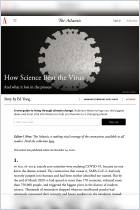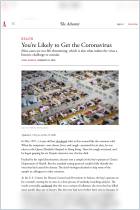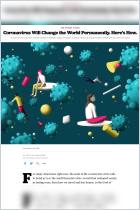The United States failed to protect its people from the SARS-CoV-2, the novel coronavirus that causes COVID-19, resulting in tens of thousands of deaths and widespread economic calamity. Despite an administration that disrespects expertise, a dysfunctional health care system and a gutted social safety net, Ed Yong argues in The Atlantic that this disaster was not inevitable. Yong discusses the coronavirus pandemic’s medical, public health and political implications. He concludes that the scale and scope of the United States’ failure proves difficult to assess.
Despite ample warning, the United States failed to bring the coronavirus under control.
The United States had ample warning of the coronavirus pandemic, and vast financial and scientific resources, but failed to provide a coherent response. Unlike South Korea, Iceland, New Zealand and Australia, among other nations, the United States didn’t quickly push the rate of infections downward. By the summer, the country faced a resurgence. The United States cannot return to the pre-pandemic status quo. In fact, COVID-19 provides only a taste of worse pandemics in the future.
People and nations can avoid pandemics in one of two ways. Preventing them from occurring would be ideal, but near impossible – there are countless viruses in the world, and it only takes the right one under the right circumstances to spur a pandemic. Early on, China understated the danger and transmissibility of SARS-CoV-2, and the World Health Organization jumped in. The United States played a significant – negative – role. The United States had abandoned important international organizations, left its seat on the World Health Organization empty at a crucial moment, gutted the Centers for Disease Control...




















Comment on this summary or Start Discussion